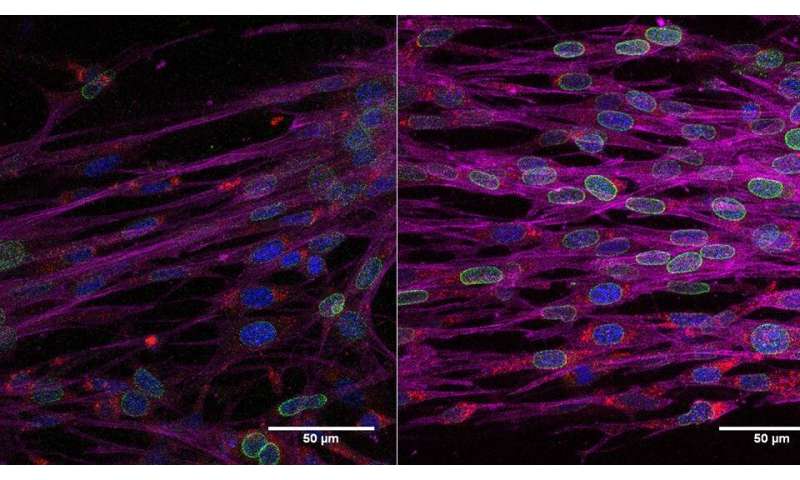
Fibroblasts are the most common connective tissue cells. They produce the structural framework for animal tissues, synthesise the extracellular matrix and collagen, and play a critical role in wound healing. However, during the cellular aging process, fibroblasts lose their ability to contract, leading to stiffness due to reduced connective tissues.
A study from the Mechanobiology Institute at the National University of Singapore has shown that these fibroblasts can be rejuvenated, or redifferentiated, by being geometrically confined on micropatterns. The above shows microscopic imaging of the control (left) and rejuvenated fibroblasts (right), with fluorescent labels highlighting the nucleus (blue), nuclear envelope (green), and cytoskeleton (in magenta). The presence of more contractile proteins (in red) in the rejuvenated fibroblasts indicates that they have recovered their ability to contract. These rejuvenated cells were observed to have reduced DNA damage, and enhanced cytoskeletal gene expression.
The results of this study were first published in the Proceedings of the National Academy of Sciences on 29 April 2020.
Source: Read Full Article
